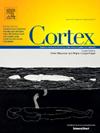这里应该演奏什么乐器?解码从遗漏时的脑电图信号预测音乐音色。
IF 3.3
2区 心理学
Q1 BEHAVIORAL SCIENCES
引用次数: 0
摘要
人类的大脑在音乐感知过程中预测各种音乐特征,如和声、旋律、节奏。先前的一项脑电图(EEG)研究表明,当旋律的音调高度可预测时,在音调省略过程中解码的准确性要高于旋律的音调不可预测时,这反映了脑电图信号中包含了特定音调的预测信息。然而,预测其他音乐特征的特异性尚未得到充分解决。本研究通过对遗漏时的脑电信号进行解码来检验预测在音色维度上的特异性。35名参与者一边观看无声电影,一边听着音色变化规则简单(高可预测性)或复杂(低可预测性)的陌生旋律。当预期由四种特定音色(celesta,电钢琴,马林巴琴,风琴)中的一种演奏的音调被省略时,脑电图被记录下来。结果表明,在高可预测性和低可预测性条件下,被忽略的刺激电位oN1的振幅没有差异。在高可预测性条件下,支持向量机对省略时的音色类型的解码优于随机机会,而在低可预测性条件下,支持向量机对省略时的音色类型的解码优于随机机会。这些结果表明,脑电图信号包含了在遗漏时应该演奏哪种乐器的信息,但这些信息并未在传统的事件相关电位中表现出来。大脑可能不仅会特别预测音高,还会预测其他音乐维度,比如即将到来的音调的音色。本文章由计算机程序翻译,如有差异,请以英文原文为准。
Which instrument should play here? Decoding predicted musical timbre from EEG signals during omission
The human brain predicts various musical features such as harmony, melody, and rhythm during music perception. A previous electroencephalographic (EEG) study showed that the accuracy of pitch decoding during tone omission was greater when the pitch of the melody was highly predictable than when it was less predictable, reflecting that predictive information of a specific pitch is contained in the EEG signal. However, the specificity of prediction for other musical features has not been fully addressed. The present study investigated whether predicted instruments are decoded from the EEG signal during omission to examine the specificity of prediction in the timbre dimension. Thirty-five participants listened to unfamiliar melodies with simple (high predictability) or complex (low predictability) timbre change rules while watching a silent movie. The EEG was recorded when a tone expected to be played by one of four specific timbres (celesta, electric piano, marimba, organ) was omitted. The results showed that the amplitude of an omitted stimulus potential, oN1, did not differ between high and low predictability conditions. However, the support vector machine was able to decode the type of musical timbre during omission better than random chance in the high predictability condition but not in the low predictability condition. These results suggest that EEG signals contain information about which instrument should be played during omission, but this information is not manifested in traditional event-related potentials. The brain may specifically predict not only the pitch but also other musical dimensions, such as the timbre, of the upcoming tone.
求助全文
通过发布文献求助,成功后即可免费获取论文全文。
去求助
来源期刊

Cortex
医学-行为科学
CiteScore
7.00
自引率
5.60%
发文量
250
审稿时长
74 days
期刊介绍:
CORTEX is an international journal devoted to the study of cognition and of the relationship between the nervous system and mental processes, particularly as these are reflected in the behaviour of patients with acquired brain lesions, normal volunteers, children with typical and atypical development, and in the activation of brain regions and systems as recorded by functional neuroimaging techniques. It was founded in 1964 by Ennio De Renzi.
 求助内容:
求助内容: 应助结果提醒方式:
应助结果提醒方式:


